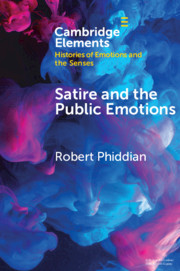Element contents
Satire and the Public Emotions
Published online by Cambridge University Press: 20 December 2019
Summary
Keywords
- Type
- Element
- Information
- Online ISBN: 9781108869263Publisher: Cambridge University PressPrint publication: 02 January 2020
References
- 19
- Cited by



